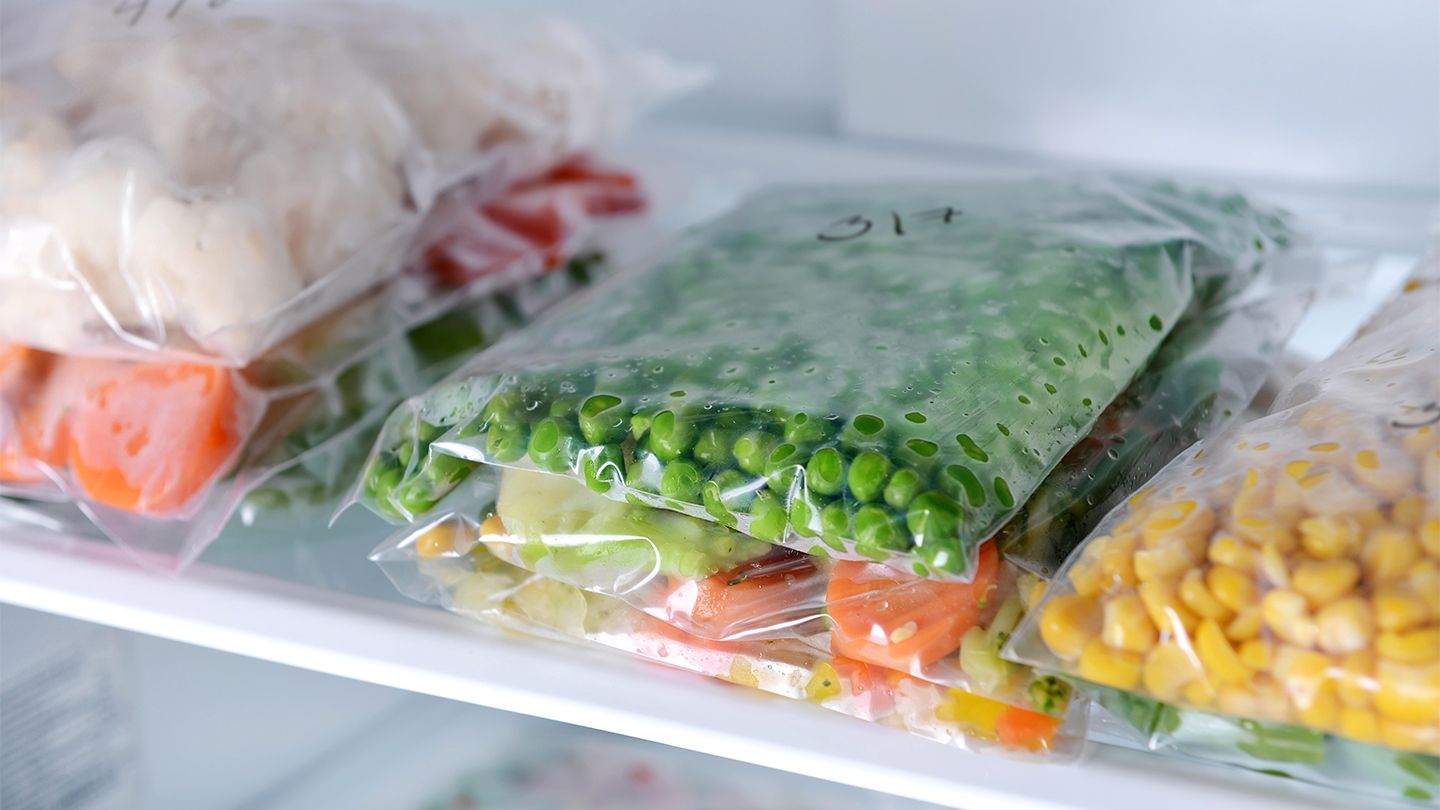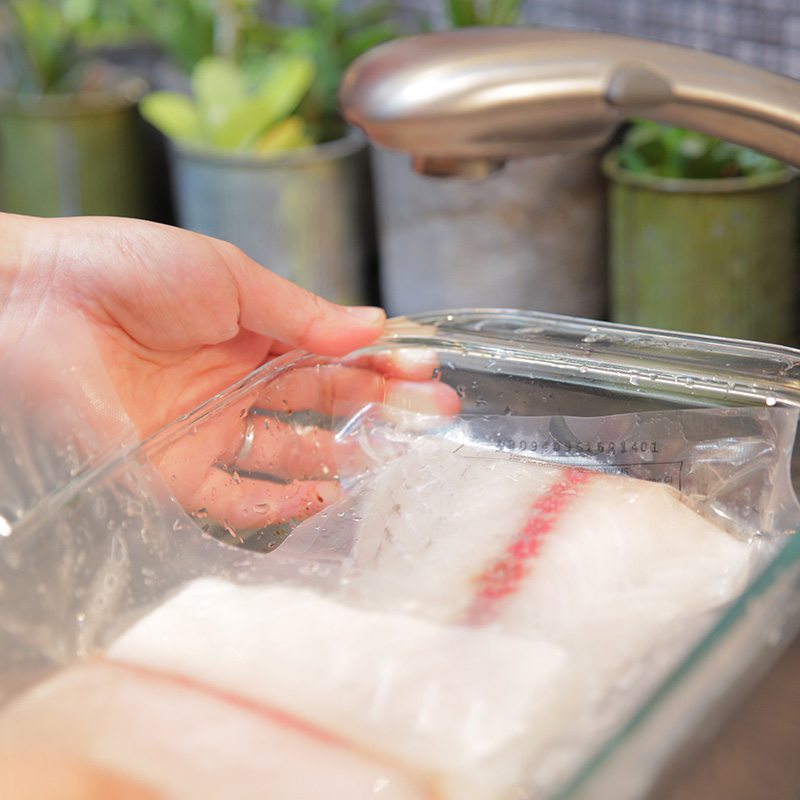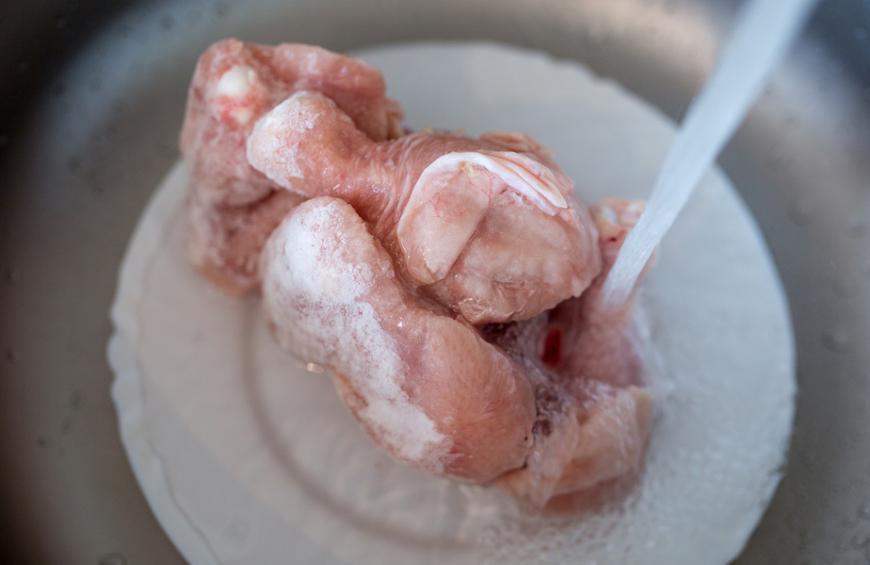
Preserve succulent
Increase storage time
Prevent bacterial growth
Prevents accelerated oxidation by direct exposure to air
For long-term storage
Good health protection
Frozen or frozen food is favored by consumers because of its long storage period and hygienic packaging, which does not need to be directly exposed to the air. Especially during the anti-epidemic period, due to the government's restrictions on gatherings and dine-in bans, more and more citizens will tend to store frozen food to satisfy their hunger.

1. Refrigerator
Thaw in a 4°C refrigerator the night before*, the shelf life can be as long as 1-2 days to reduce bacterial growth. (**Do not thaw at room temperature!)
*Recommended by CFS.
**According to the Centre for Food Safety, food should not be thawed at room temperature for more than 4 hours. If it has been thawed at room temperature for 5 to 6 hours, the food may no longer be safe to eat.
2. Microwave oven
If the power is too high, it will affect the quality of the frozen meat itself, you can make good use of the defrosting function of the microwave oven, but it is recommended to eat it immediately after thawing to avoid the breeding of bacteria.
3. Aluminum products
First put the bottom of the aluminum product on the table, then put the frozen meat on it, and then press the bottom of another aluminum product on the frozen meat to form a sandwich for 10 minutes. Keep in mind that stainless steel products are not suitable for this thawing method.
4. Use brine or vinegar
Frozen meat can be thawed completely by placing it in salt water or vinegar. The reason is that salt water and vinegar can accelerate the melting of ice and do not breed bacteria. On the contrary, it is not recommended to freeze with hot water, because the surface of the frozen meat will heat up rapidly, but there are still ice cubes in the middle of the meat, and microorganisms are easy to multiply.
5. Air
If you choose to thaw at room temperature, it is best to wrap the frozen meat in plastic wrap or put it in a plastic plastic bag and put it on the table, which can not only prevent the growth of bacteria, but also thaw slowly without destroying the meat quality. resemblance.
6. Tin foil
Tinfoil has a thermal conductivity effect. Wrap the frozen meat in plastic wrap, and then lay a layer of tinfoil on the outside and place it on a stainless steel flat bottom wok to speed up the thawing.
7. Flush
Turn on the faucet to rinse the frozen meat with running water, but the frozen meat must be placed in a fresh-keeping bag to avoid direct contact with the water in the water pipe to breed bacteria.
8. Thawing the Plate
The defrosting plate can thaw frozen meat quickly, and it can also lock in the moisture and nutrients of the food. (Rinse the thawing plate with hot water before use)

Loss of nutrients
Poor meat quality
Frozen meat is soft on the outside but still frozen on the inside
Breeding bacteria
Sunlight Employment Agency hopes that the above information will help employers to better understand how to thaw food, and it is also suitable for teaching Filipino maids and Indonesian maids.
